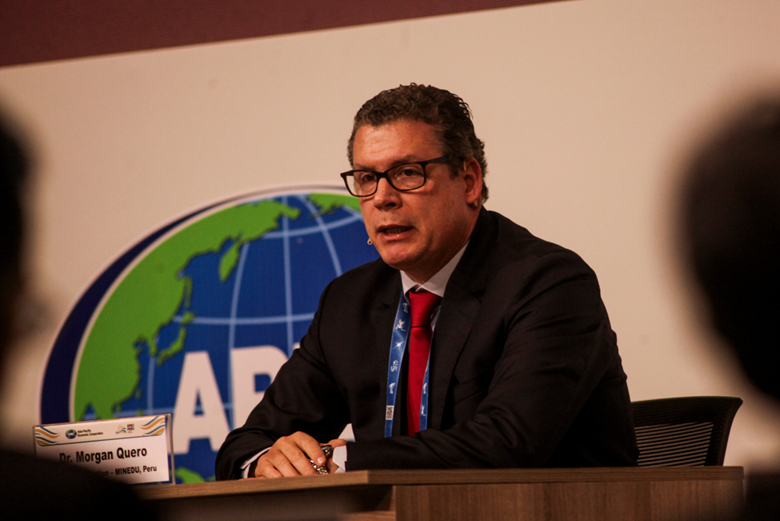Transforming Education in APEC: How AI and Emerging Technologies Can Shape Future Skills – Peru’s Experience

Peru is turning the challenge of the digital gap into an opportunity for growth with APEC's collaborative support.
Back in the 1980s, the perception of technology in modern societies was akin to a premonition of the end of humanity, which would be replaced and controlled by the world of machines and artificial intelligence.
However, unlike the fatalistic version of the dystopian future postulated by George Orwell in his novel 1984, technology and artificial intelligence today are used by the world's major economies to drive productivity, innovation and industrial development.
This is evidenced by a recent World Bank report on the artificial intelligence revolution in education, which highlights a study showing an increase in higher quality outcomes in less time among consultants who used artificial assistance compared to those who did not.
In the education sector, artificial assistance programs present solutions for teachers, students, and administrative staff, serving as a personalized guide that facilitates information, provides feedback, and optimizes teachers' work.
It is a significant challenge, but we are preparing for it by dispelling those apocalyptic and catastrophic views, focusing on people's well-being, betting on the digital talent of our youth, providing ongoing training for teachers, and promoting spaces that encourage our children's interest in technology and innovation.
To date, as part of promoting the proper use and exploitation of artificial intelligence, 25 interaction workshops have been held in Peru, engaging 786 educational leaders who have enhanced their technological skills required by the labor market for optimal professional performance, such as communication skills, responsibility, and teamwork. Undoubtedly, technology is changing the labor landscape and transforming education.
Therefore, national qualification frameworks become strategic tools to ensure that our youth are prepared and able to respond to these changes.
A recent example is the Port of Chancay. As a hub, it requires new services linked to industry and markets. In response, we have developed synergies with the private sector and academia, allowing us to design an immediate response to new needs.
Technical higher education, as well as secondary education for work, must be strengthened with technological tools. This is a timely and urgent response to the disruptive impacts of emerging technologies, such as the integration of artificial intelligence in education.
In this regard, in Peru, technological infrastructure and furniture in schools are beginning to become a reality. The use of modular infrastructure will allow us to build 26 comprehensive modular schools, one per region nationwide, helping to close infrastructure gaps in rural areas.
This pedagogical model places the student at the center of teaching, allowing them to learn with a wide range of activities, developing their skills and technological competencies. However, what makes this even more special is that it includes a secondary education model with technical training, as well as workshops on education for work.
This will ensure that the bulk of the personnel required by economic sectors have the necessary digital and soft skills.
Our youth will be able to obtain multiple certifications aimed at ensuring their insertion into the labor market and enabling them to develop ventures that allow them to achieve their life projects.
We are aware that digital gap is one of the biggest challenges we face in an economy like ours. But far from seeing them as a barrier, we are turning them into opportunities to address them with APEC’s help.
For basic education, for example, we have developed digital platforms like PeruEduca, which offers a wide range of educational content, including 15,000 titles organized in collections where mathematics and communication are fully covered.
Additionally, to address linguistic and cultural diversity, we have created the Kumitsari software program. Kumitsari, which means "conversing" in the Kukama-Kukamiria language, is an innovative project that links digital technologies with the teaching of our native languages. The program aims to strengthen the training of intercultural bilingual teachers in native languages such as Aymara, Ashaninka, Awajún, Quechua, Shawi, Shipibo-Konibo, and Spanish.
There is an urgent need to create more projects like these in the APEC region, projecting the enhancement of educational infrastructure that should be complemented with the new technological and digital tools demanded by the academic and professional world.
As those responsible for education, let us make a call to action so that stakeholders continue to join forces to ensure that every girl, boy, and young person in the region has access to an education that prepares them for the labor market and makes them active and responsible citizens, capable of leading the change the world needs to eradicate poverty and inequality.
***
Dr Morgan Quero is Peru’s Minister of Education.

